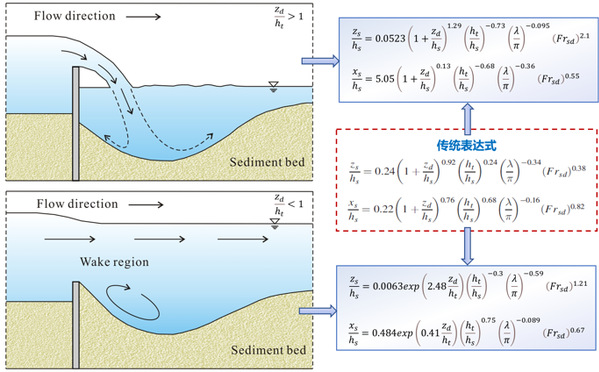Recently, the ASCE presented the 2022 J. C. Stevens Award. The Award went to the discussion paper Discussion of ‘New Approach to Predicting Local Scour Downstream of Grade-Control Structure,’ in the Journal of Hydraulic Engineering, June 2021. by Professor Guan Dawei, backbone member of our research team for comprehensive treatment and protection of estuary & coast, in cooperation with Sichuan University.
It is reported that the Award was established in 1943 to commemorate Mr. John C. Stevens, the outstanding engineer and former chairman of ASCE. The award is elected once a year. All editorial committee members of the seven journals including Journal of Hydraulic Engineering, Journal of Hydrologic Engineering published by the Environmental & Water Resources Institute of the ASCE nominate and select from discussion papers published in the previous year, and grant the award to the paper with the most outstanding academic contribution. This is the first time that Chinese scholars in the field of river and coastal dynamics won the award in nearly 80 years since its establishment. Previous award winners include international famous sediment researcher Hans Albert Einstein, Former Chairman of IAHR John F. Kennedy, member of National Academy of Sciences Gary Parker etc.
According to available studies, the water damage rate of groundsill works is up to 70%, and the damage will also cause severe scouring and undercutting of the upstream and downstream terrain, resulting in serious consequences. The scour damage of groundsill works usually occurs in the flood process with strong power and strong sediment discharge. Therefore, the scouring mechanism is very complex and the prediction of scouring depth is very difficult. In the paper of Professor Guan Dawei, it is proposed to consider the influence of water submergence degree in the scour analysis model of groundsill works, reconstruct the theoretical model of scouring of groundsill works based on the scour characteristics under the conditions of free outflow and submerged outflow, and establish a new method for predicting the scouring depth applicable to different submergence conditions (Figure 1). The new theoretical model the scouring mechanism of groundsill works under complex hydrodynamic conditions more accurately, and the proposed prediction method of scouring depth has the 58% lower average error when compared with the conventional method (Figure 2).

Figure 1. Diagram of Scouring Mechanism and Calculation Method of Groundsill Works under Different Submergence Conditions

Figure 2. Comparison of Accuracy between Improved Scouring Predication Method of Groundsill Works and Conventional Method


